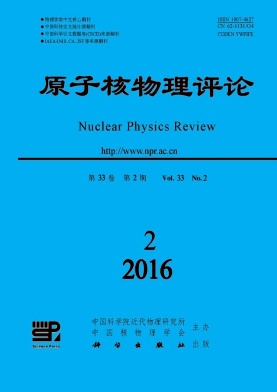Nuclear Physics Programs for the Future RIBs Facility in Korea
doi: 10.11804/NuclPhysRev.33.02.131
- Publish Date: 2016-06-20
-
Key words:
- Rare Isotope Beam /
- nucleosynthesis /
- mirror nuclei /
- In-Flight fragmentation /
- two proton radioactivity /
- transfer reaction /
- one and two nucleon removal (knockout) reaction
Abstract: We present nuclear physics programs based on the planned experiments using rare isotope beams (RIBs) for the future Korean Rare Isotope Beams Accelerator facility(KRIA). This ambitious facility has both an Isotope Separation On Line (ISOL) and fragmentation capability for producing RIBs and accelerating beams of wide range mass of nuclides with energies of a few to hundreds MeV per nucleon. Low energy RIBs at Elab = 5 to 20 MeV per nucleon are for the study of nuclear structure and nuclear astrophysics toward and beyond the drip lines while higher energy RIBs produced by inflight fragmentation with the reaccelerated ions from the ISOL enable to explore the neutron drip lines in intermediate mass regions. The planned programs have goals for investigating internal structures of the exotic nuclei toward and beyond the nucleon drip lines by addressing the following issues: how the shell structure evolves in areas of extreme proton to neutron imbalance; whether the isospin symmetry maintains in isobaric mirror nuclei at and beyond the drip lines; how two-proton radioactivity affects abundances of the elements; what the role of the continuum states including resonant states above protondecay threshold in exotic nuclei is in astrophysical nuclear reaction processes, and how the nuclear reaction rates triggered by unbound proton-rich nuclei make an effect on rapid proton capture processes in a very hot stellar plasma.
| Citation: | Moon Chang-Bum. Nuclear Physics Programs for the Future RIBs Facility in Korea[J]. Nuclear Physics Review, 2016, 33(2): 131-140. doi: 10.11804/NuclPhysRev.33.02.131 |






 甘公网安备 62010202000723号
甘公网安备 62010202000723号 DownLoad:
DownLoad: